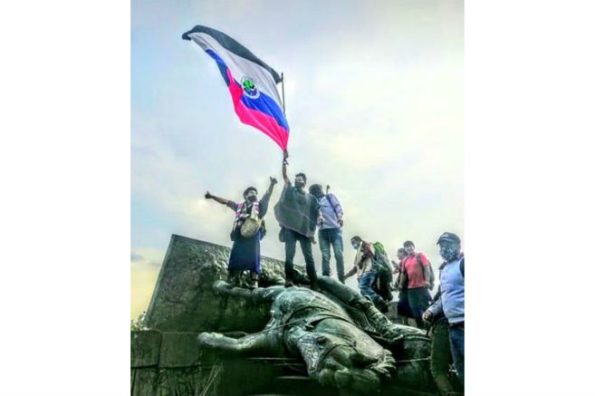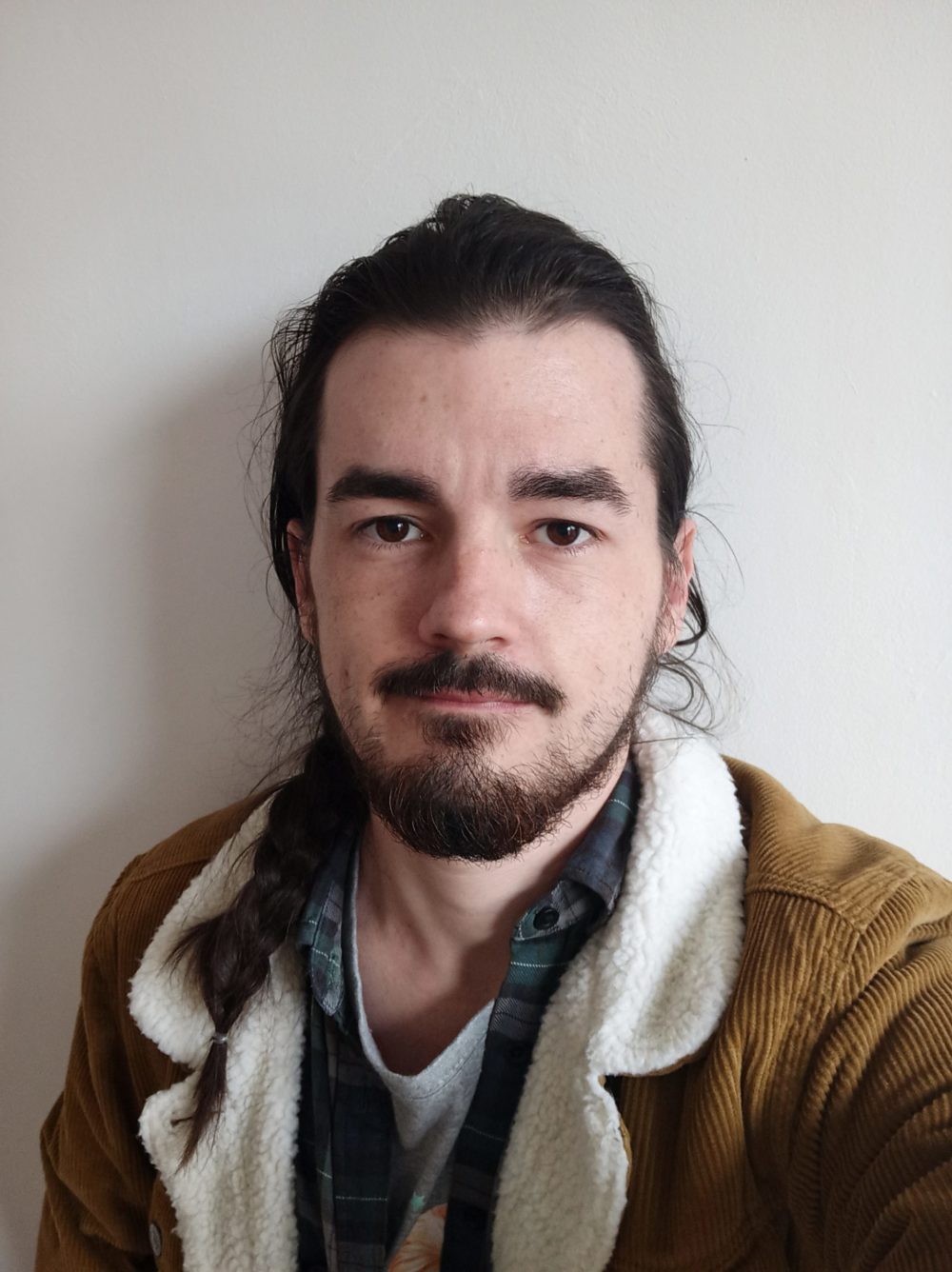Search
To search for an exact match, type the word or phrase you want in quotation marks.
A*DESK has been offering since 2002 contents about criticism and contemporary art. A*DESK has become consolidated thanks to all those who have believed in the project, all those who have followed us, debating, participating and collaborating. Many people have collaborated with A*DESK, and continue to do so. Their efforts, knowledge and belief in the project are what make it grow internationally. At A*DESK we have also generated work for over one hundred professionals in culture, from small collaborations with reviews and classes, to more prolonged and intense collaborations.
At A*DESK we believe in the need for free and universal access to culture and knowledge. We want to carry on being independent, remaining open to more ideas and opinions. If you believe in A*DESK, we need your backing to be able to continue. You can now participate in the project by supporting it. You can choose how much you want to contribute to the project.
You can decide how much you want to bring to the project.

At the time I am writing this, less than a week has gone by since a group of indigenous Misak people in Cali, Colombia, knocked down the statue of Sebastián de Belalcázar, the Spanish conquistador and founder of the city. During the protests against the government’s tax reform, which might seem to have nothing to do with the past, or with conquistadores, or with the Spanish empire, the attention has been focused on symbols that reflect a whole system of values that are exalted and set in bronze. This is not a thoughtless demolition or a spontaneous act as these symbols have long been part of a conflictive reading.
This is the second time in less than a year that Belalcázar kissed the ground. In September, another statue of him was knocked down, this time in the Morro de Tulcán in Popayán, Colombia, a sacred site of the Misak people.
Each of these acts are a reflection of discontent, not with the chunks of metal but with the system they represent. Many people might wonder why social discontent would lead to the attack on inert objects, and often the official media discourse focuses on the act in order to delegitimize the protests and make them seem like a senseless act. How should we view an attack against a symbol of the city and of the nation? Against something that has done nothing? Criticism that satisfies both conservatives and liberals can then be heard: these protests are merely senseless, criminal vandalism.
However, it is because these objects are not inert that toppling them matters. The objects are imbued with meaning, with life, and these statues, erected mostly in the late 19th and early 20th centuries, are not so much representative of the figure himself (Sebastián de Belalcázar died on the way to Spain to appeal his own death sentence), but rather of the liberal system that decided to erect them, and sought in these statues a reference to commemorate centuries later. They reflect the values of the construction of a national government that, in many cases, has been based on the exclusion of entire groups. These values become set within these metal or marble molds, and create new places of memory that become part of the daily routine in plazas and places for commemorative events. We cannot ignore the meaning of the material, and the sites associated, in the construction and legitimation of a concrete narrative, an idea of history that, on many occasions, is antagonistic to entire groups.
In other words, the violence against these monuments is not irrational, but is loaded with meaning. When the Misak activists toppled the statue of Belalcázar on the hill of Tulcán, they made a claim for their own history, one that denounces the system that had excluded them, in order to build their own. The act of toppling the statue was described as violence in several media, ignoring the fact that the violence had started much earlier, when the statue of the conquistador was erected in a place sacred for the Misak people. It is in these acts of demolition that the structural violence of the system, normalized in daily life and extolled in statues, monuments, and national holidays, is revealed.
The activists substituted the statue for a flag, the Misak flag, and proclaimed the day as the International Day of Memory of the First Peoples of the World. We could try to place these two antagonistic narratives on an equal footing since serve to include some people and exclude others. However, one of these groups has the support of an entire institutional structure that reinforces these values, inculcating them at school and in the media, while the other languishes in the margins. One is raised as the truth, which is how the positivist history of the 19th century was constructed, based on presumed certainties, while the other is based on the feeling and the experience of injustice. The great, totalizing narratives of modernism are still very present in these statues.
So, is a different relationship with the past possible, one which seeks not antagonism but the agony of mutual recognition? This would not be the first time that similar projects have been proposed, although they are usually associated with systems that have already disappeared, as is the case of the countries of the former Soviet bloc, in which some of these statues have become sites for artistic use or resignification. It is, however, much more difficult to re-signify the symbols of a still prevailing system in which many still struggle to find a place. For years, the statue of Edward Colston, in Bristol, underwent a complex process, first calling for its removal and, later, its recontextualization by means of an explanatory plaque. No solution was reached until a social outbreak brought it down.
Heritage, highly valued in Europe since the 19th century as representative of a nation, will always be enmeshed in complex networks of meanings, both personal and collective. Iconoclasm is not the global solution, therefore, to this memory of conflict, but rather the reflection of the system itself. More profound changes are needed, not only in public objects but also in the discourse taught in schools, where the assumptions of these narratives or the most pernicious aspects of certain concepts that we continue to use in a colloquial way (Ah, the blessed Reconquest of Spain) are not explained to the children. In education and in the Academy, we explain a past that is supposedly neutral, and we let other forces make the meanings explicit, without fully realizing that they tend to favor conformity or reactionary ideology.
This is why our perception of the past must be critical, and why we must recognize the explicit emotional ties that are formed in schools and museums. And why we must recognize the multivocality of the narrative and the inherent complexity of historical study. It is not about seeing History from the point of view of the losers, for even on the side of the winners there were always those who won more than others, and vice versa. There were indigenous chiefs who collaborated with the Creole elites in the new system, and there was resistance from the system´s marginalized that went beyond the barriers of blood or race. In the explicit recognition of the construction of these narratives, and their inspection, we can open space for a dialogue that recognizes these sites for what they are: not history but memory, where there is always a component of mythification and simplification. If we are willing to accept the forgetting of those details, which dull the patina and expose the fissures, perhaps the statue deserves its place. But if in the recognition of the pain of others we see reasons for shame, perhaps the main plaza is not the appropriate place.
It was never individual heroes who made History, but instead ordinary people whose names we have forgotten, and whose dilemmas were perhaps more mundane but also more understandable. It might be worth remembering them. Perhaps we can escape from the positivist History of men and events and instead create a history of common people and common problems.
(Featured Image: Misak Indians raise the Misak flag over the toppled statue of Sebastián de Belalcázar in Morro de Tulcán. Twitter account @marthaperaltae).

Mikel Herrán is an archaeologist and currently a PhD student in Archaeology at the University of Leicester. His academic work studies domestic spaces as a horizon of social transformation in al-Andalus. He combines his research with dissemination and scientific communication, especially in the field of History and Archaeology through social networks, mainly Youtube (PutoMikel), where he explores the links between the past and the present in order to present them to a wider audience.
"A desk is a dangerous place from which to watch the world" (John Le Carré)